There are plenty of electric vehicles (EVs) that aren’t too pricey. More domestic brands are getting in the mix, and the old reliables like Toyota and Mazda are stepping up. There are also niche brands offering affordable motorcycles and bikes if cars aren’t your thing.
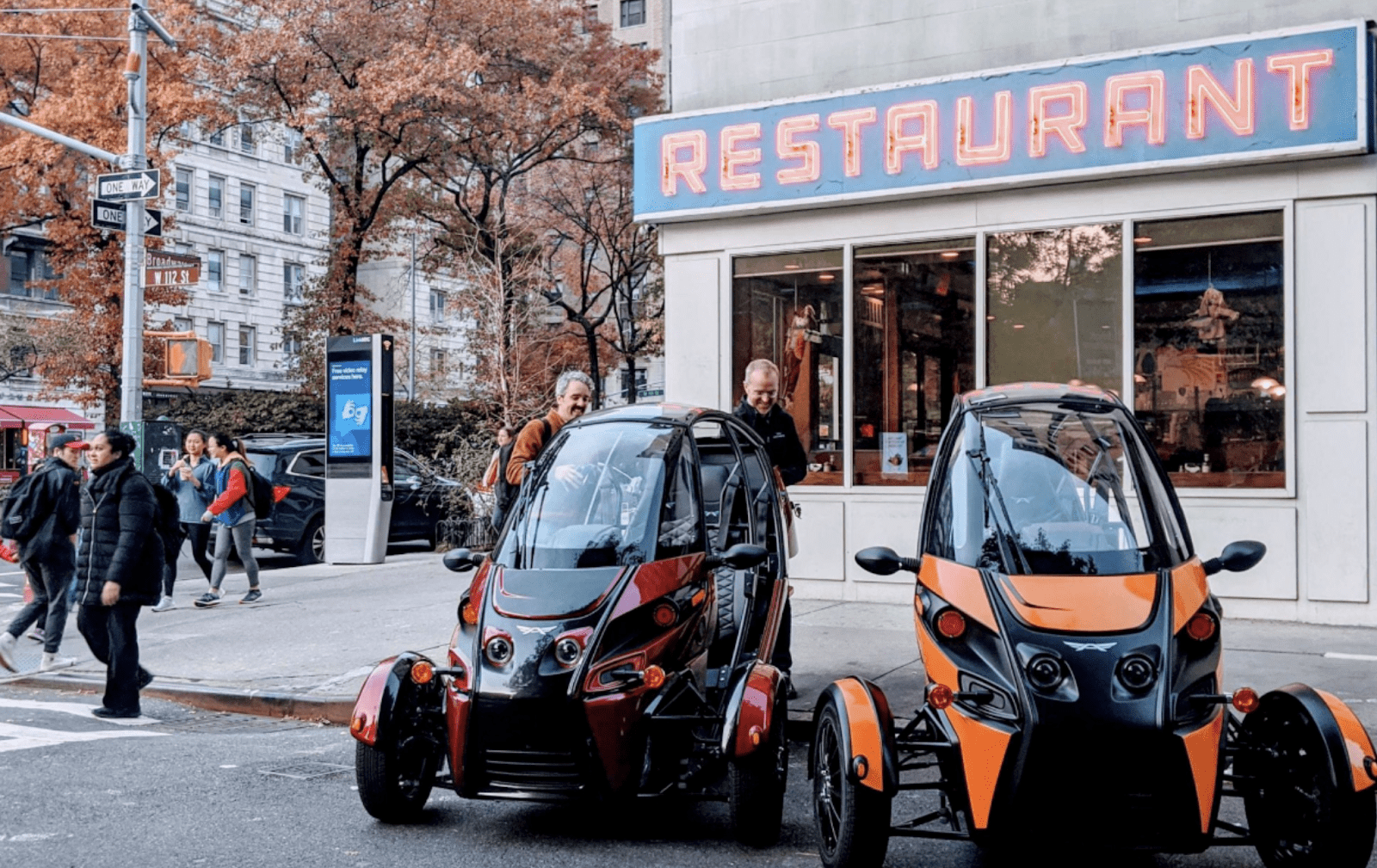
Photo Courtesy Arcimoto
Acrimoto: Acrimoto is a Portland, OR-based vehicle manufacturer creating what they call a “Fun Utility Vehicle,” or FUV. The three-wheeler is a combination of a motorcycle and a golf cart. The company believes the FUV is a sustainable way of reducing emissions in urban areas.
The compact vehicle can weave traffic with ease. It gets up to 102 city miles before it needs charging. The battery gets around 173.3 mpge — pretty outstanding mileage. It’s relatively affordable, starting at $17,900.
The FUV isn’t just for fun; it can be used for various industries. First responders, food delivery services, and filmmaking crews have already taken advantage of the vehicle’s pace (75 mph) and traffic dodging. Wahlburgers in Key West, FL, and JOCO Foods in New York City use Acrimoto’s Deliverator model for pilot delivery programs.
Arcimoto sells these three-wheelers in California, Washington, Oregon, Arizona, and Florida. Cities like Portland, San Francisco, and San Diego, and Orange County, CA, will have dealerships. The biggest obstacle is getting people licenses to drive the FUVs, which are classified as motorcycles in most states. However, Hawaii passed a law classifying these types of EVs as “autocycles,” which only need a standard driver’s license. More legislation changes in other states could help spur growth.
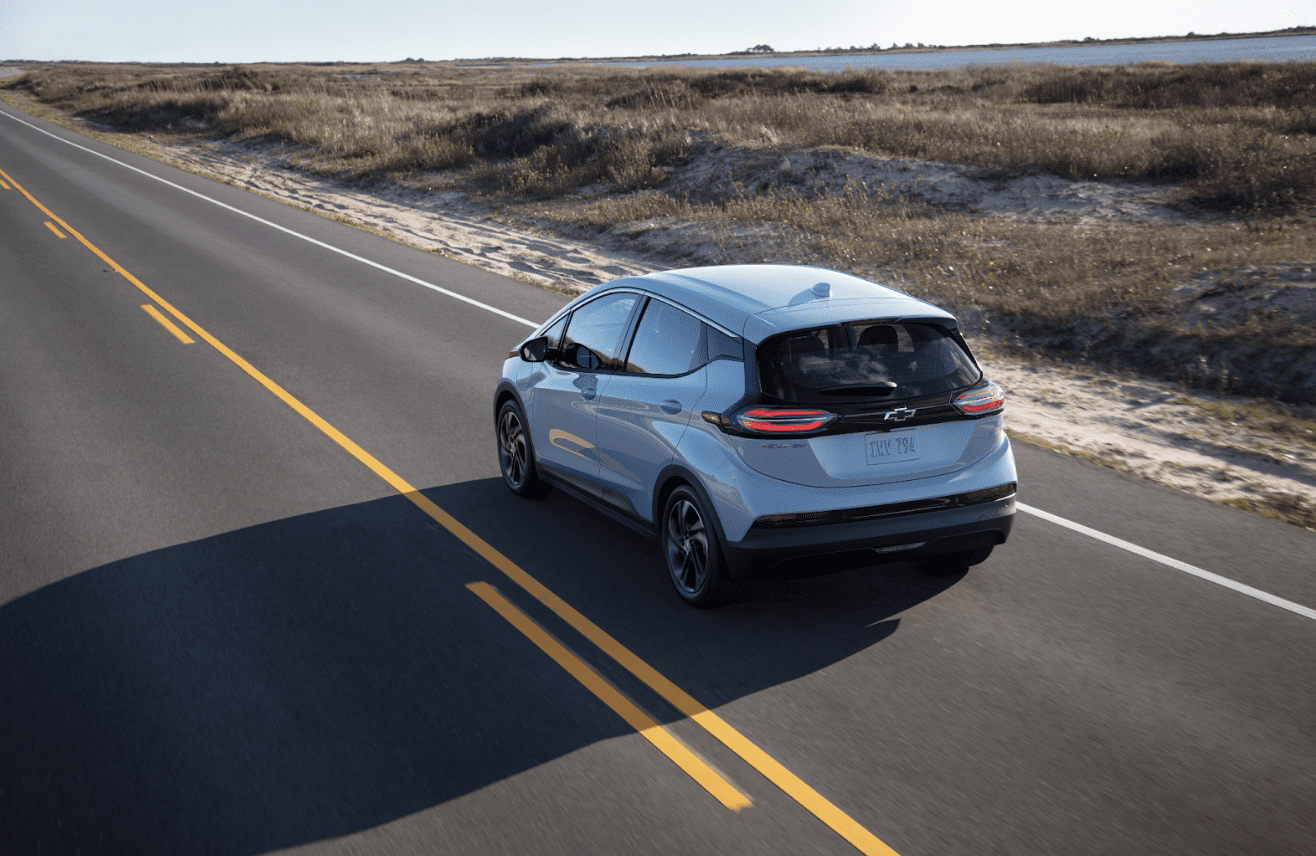
Photo Courtesy Chevy
Chevy Bolt: The Chevy Bolt is your basic hatchback but with no gasoline required. It’s a sporty vehicle with a nice geometric shape, intelligent design, and aerodynamic structure. The Chevy designers made this car look comfortable with a minimalist appeal.
It’s an economical EV; the range sits at 259 miles, better than the Hyundai Kona Electric but just short of the Telsa Model 3. However, it’s cheaper than both, with a $31,500 MSRP.
The car is FWD and has 200 hp in the engine, going 0-to-60 in 6.5 seconds. A dual-charging cord can plug into a Level or Level 2 charger, so you don’t need a home charger with the Bolt. The car can regain 100 miles in just 30 minutes with a Level 3 charger.
The Bolt also has regenerative braking to ease range anxieties. The compact hatchback only has 17 cubic storage space, but lowering the seats gets more.
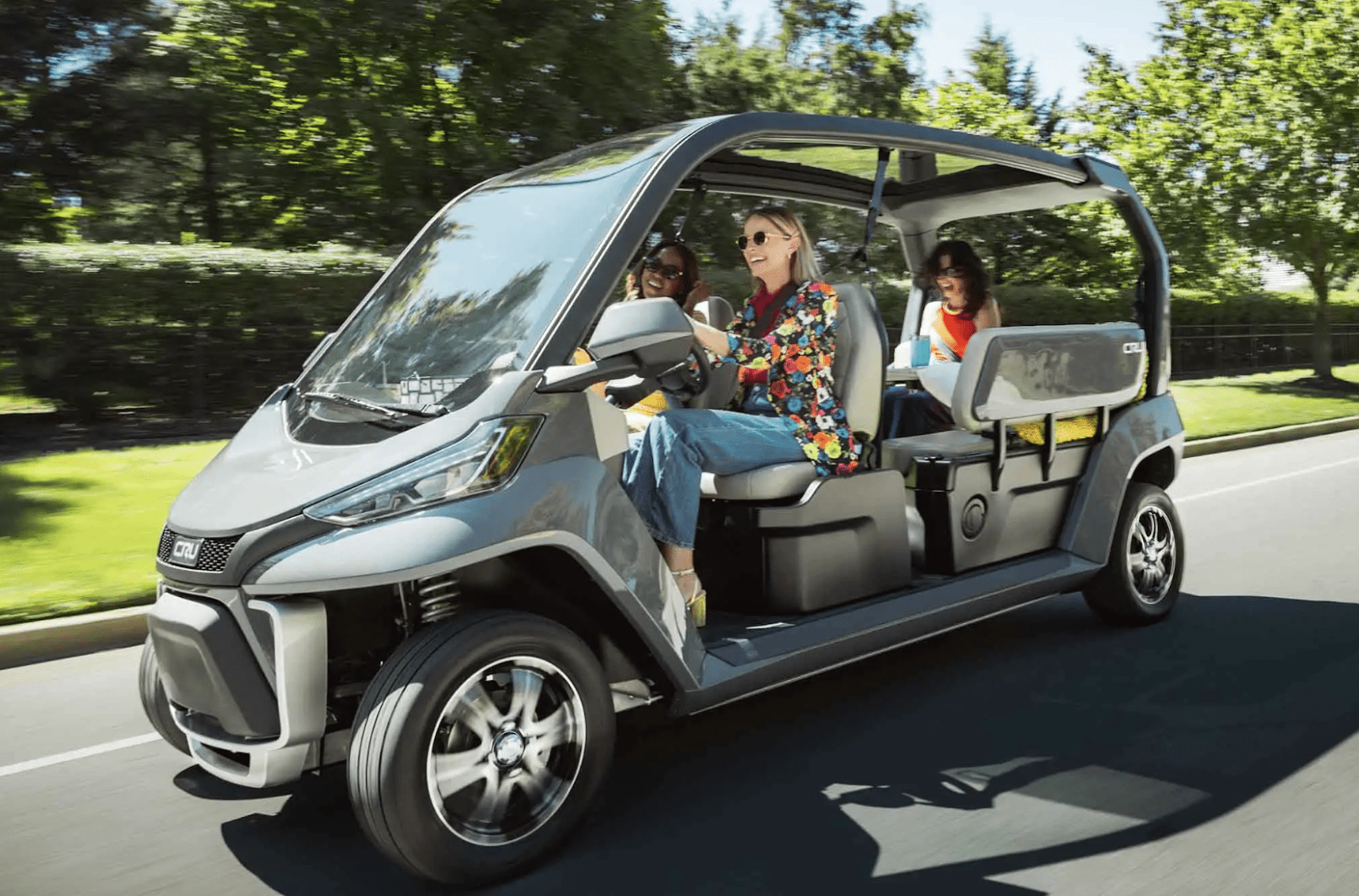
Photo Courtesy BMW Designworks
Cru, By Club Car: Club Car worked with BMW’s Designworks and unveiled prototypes of the Cru, a multi-seat cart-style EV. It’s street-legal, with a top speed of 25 miles per hour, and can be driven on any roadway with a 35-mile-per-hour speed limit.
Club Car calls this cart the Neighborhood Electric Vehicle (NEV), ideal for getting around a culdesac or hitting the market. It can seat up to six people, and there’s a deployable table put under the rear seats. That’s great for enjoying snacks or a quick board game.
The Cru can be fully charged in six to 14 hours using a 110-volt or 120-volt outlet and the supplied charger — depending on battery discharge. And don’t expect to go incredibly far. The range is about 15 to 20 miles before the next charge. It has a starting price of $27,000.

Photo Courtesy Fisker Inc.
Fisker Ocean: Fisker Automotive, Inc. was founded by legendary auto designer Henrik Fisker. Having worked at distinguished auto groups like BMW, Aston Martin, and Ford, Fisker ventured on his own to design a new plug-in hybrid car, the Fisker Karma. Despite a dicey legacy, Fisker endured and created the Fisker Ocean, his first all-electric car.
The Ocean is a futuristic SUV with 22-inch wheels and a sloping shape. It looks like the Range Rover Evoque. Solar panels have been integrated into the car’s roof to charge it while parked. The windows all lower when the EV enters “California Mode,” letting in natural light and air.
The interior is unique. The dash and seating are all made from sustainable or recycled materials, including recycled t-shirts and fishnets. The seats are one integrated unit instead of separate chairs.
The engineering is just as impressive. The Ocean’s battery can go 350 miles before the next charge. It can go 0-to-60 in 3.6 seconds and comes with 550 hp. It can recharge 200 miles in 30 minutes with one of Electrify America’s charging ports. Fisker said customers will get complimentary charging for a year.
The safety features include emergency braking, traffic light/sign recognition, and collision avoidance. The Ocean starts at $37,499 for the Sport model but qualifies for the clean vehicle tax credit.
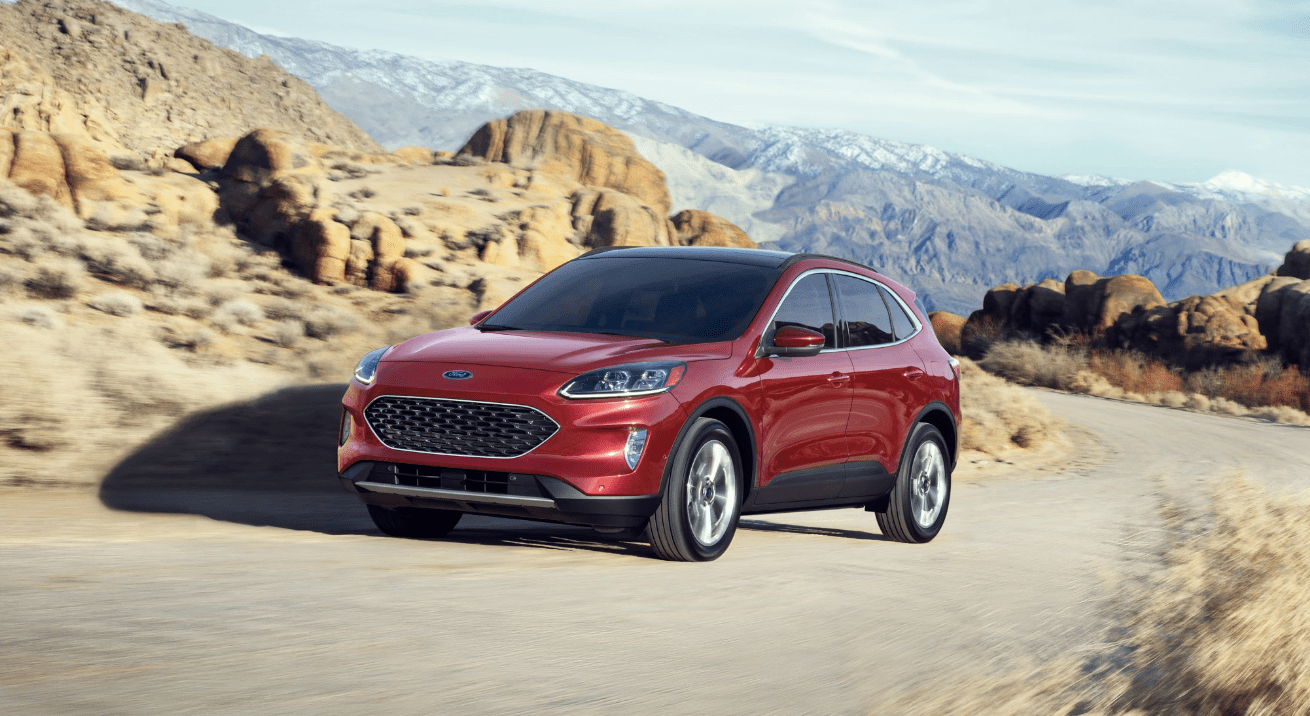
Photo Courtesy Ford
Ford Escape PHEV: Following the success of the Mustang Mach-E and F-150 Lightning, Ford rolled out the Escape PHEV. A zero-emission version of their patented small-size SUV, the Escape PHEV delivers the reliability of Ford with a green thumb.
The 221 hp power engine has more horsepower than the base model and regular hybrid version. The acceleration time is decent, with 0-to-60 in 7.7 seconds. That’s also thanks to a 2.5-liter four-cylinder engine. The electric motor gives the car 37 miles of range, plenty for the daily commute. The car gets 40 mpg of gasoline power, on par with the normal hybrid.
The Escape PHEV has several drive modes that allow flexibility between the ICE and the electric engine. The system can help save the battery or use only electric power. The SUV has a regenerative braking system sending charge back to the battery, and a “brake coach” will tell you how much was returned. The battery can be fully charged in 3.5 hours using a Level 2 charger.
The interior is practical, with faux leather seats, a digital dashboard, an infotainment center, 34.4 cubic feet of trunk space, and plenty of cup holders. Safety-wise, there’s pre-collision assist, SOS post-crash alert systems, emergency braking, blind spot sensor, and lane-keeping technology. The Escape PHEV starts at $35,455 and is eligible for the clean vehicle tax break.
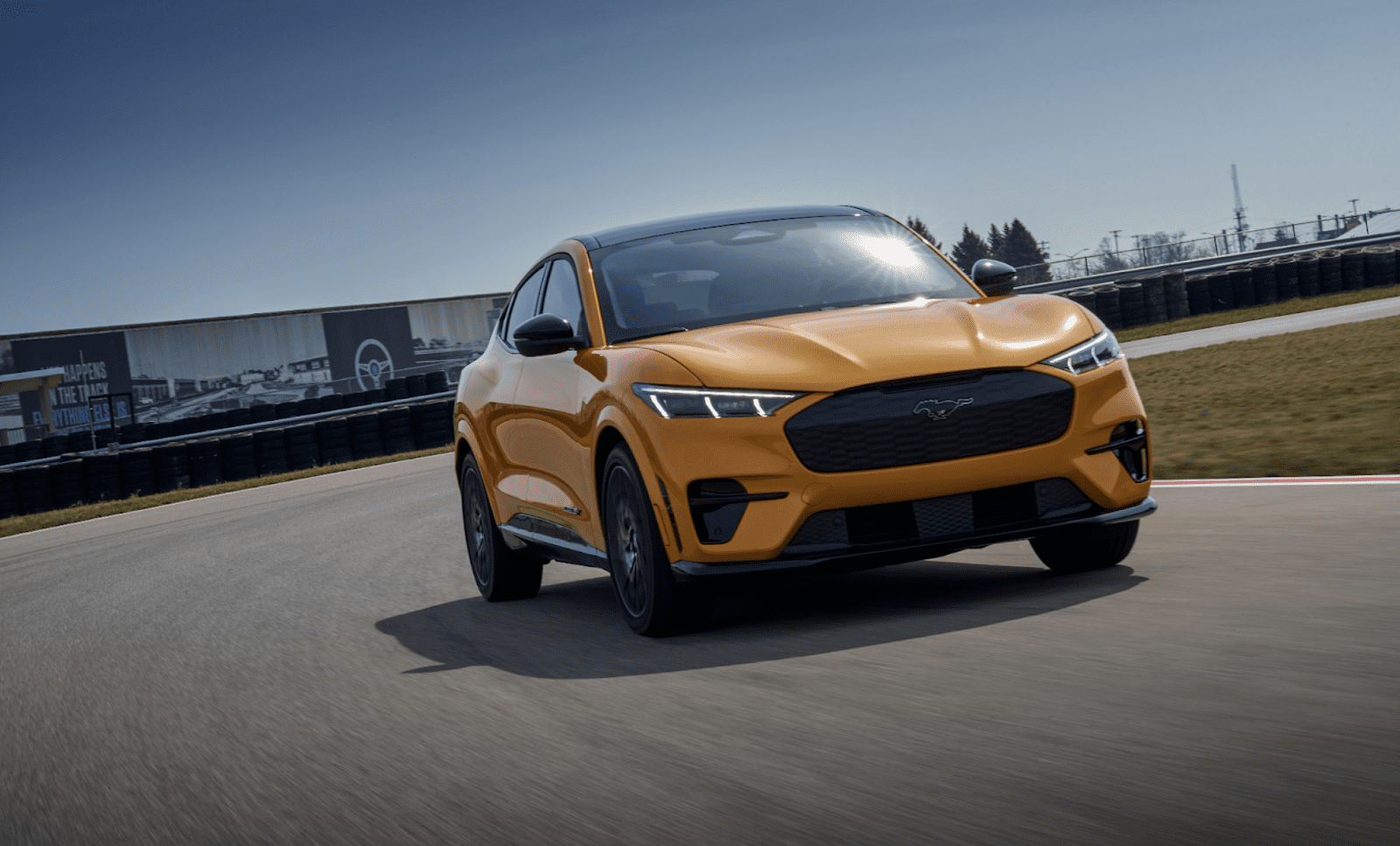
Photo Courtesy Ford
Ford Mustang Mach-E: The Mustang Mach-E debuted in 2020 and has been a home run for Ford. A car that’s something between an SUV and a sedan, it’s worthy of wearing the Mustang logo. It has the same headlights, taillights, and forward-facing grille as the traditional Mustang.
The Mach-E line has four different models that offer certain specs, but some don’t — all with varying prices. The GT makes gets up to 480 hp, matching the Mach 1. That allows it to get from 0-to-60 in 3.5 seconds, a blistering pace for an EV. Even in less powerful models, the horsepower is impressive.
The battery range is also great, with 314 miles of range. The interior has two rows of seating and an almost buttonless infotainment system. There are 29 cubic feet of cargo space. The front trunk is durable and has a spill-resistant plastic lining.
It’s not overly expensive, starting at $44,995 for the standard Mach-E. Ford’s spectacular maintenance department will keep this car running for years. A new battery is needed every three to five years, and wheel alignments every six months, but not much other work is necessary.

Photo Courtesy Hyundai
Hyundai Ioniq 5: The Ioniq 5 has been a staple of the perseverance of the auto industry to develop a distinctive electric car. In April 2022, 102 jurors gave three awards to Hyundai’s flagship EV at the World Car Show in New York — it even won Car of the Year.
The Ioniq 5 looks like an 80s rally car with its sloping frame and body. The tires and the headlights look like a postmodern video game. Inside, the cabin is spacious and luxurious. Two digital dashboards make up the front, with plenty of media and GPS features to pick from. It even has 27 cubic feet of storage and 59 cubic feet when the seats are folded down.
Driver safety is paramount with the Ioniq 5, coming standard with blind spot assistance, adaptive cruise control, and collision avoidance.
The car has RWD and AWD options. The engine contains 225 hp and does 0-to-60 in 7.4 seconds. The AWD Ioniq 5 has 320 hp, though.
The battery range is around 256 miles in the AWD version but 303 miles in the RWD version. Regenerative brakes return power to the battery. With a DC fast charger, it goes from 10% to 80% in just 18 minutes. The Ioniq 5 is priced at $41,195 for the RWD version and $48,395 for the AWD model.
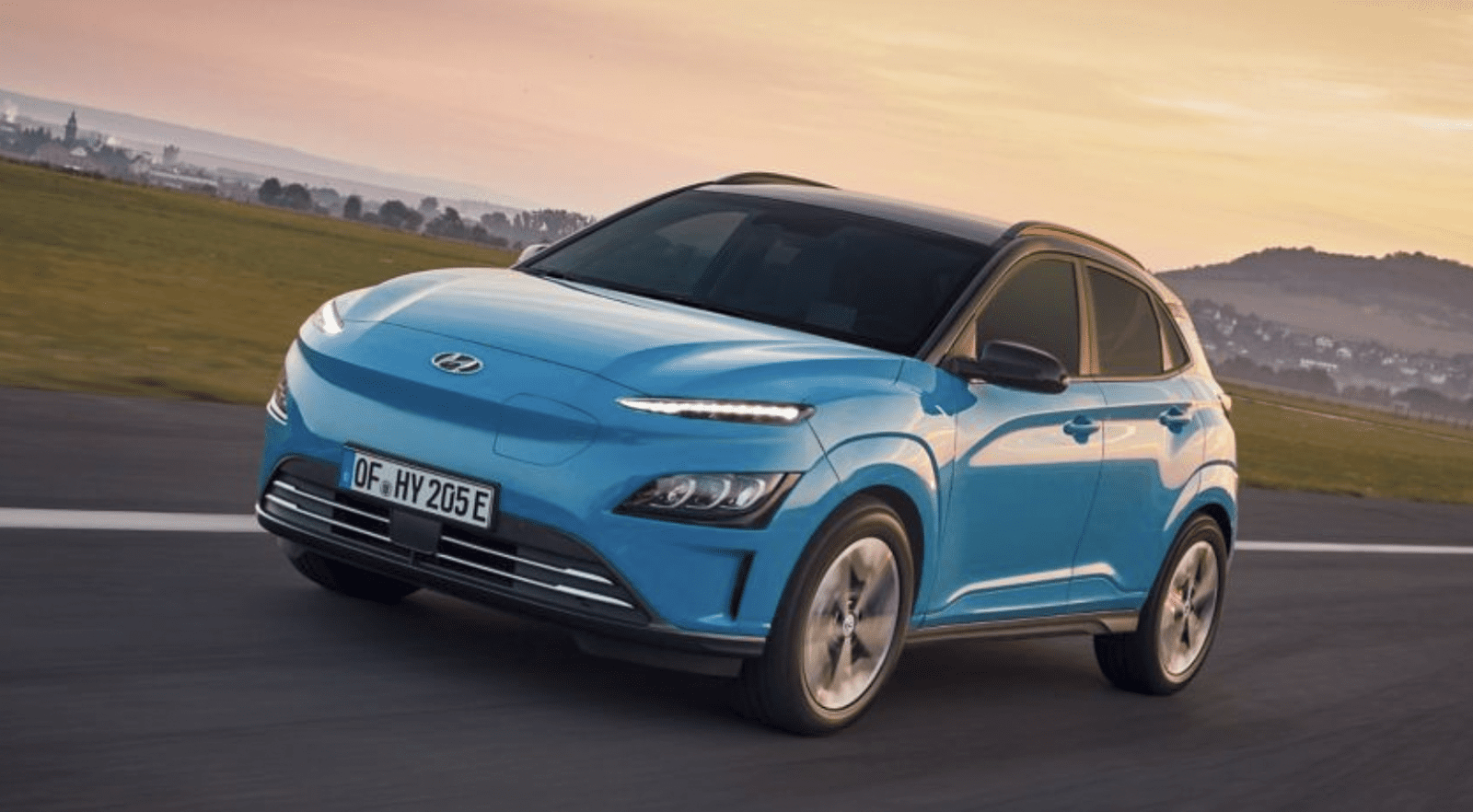
Photo Courtesy Hyundai
Hyundai Kona Electric: The Kona is one of the highest-rated EVs in the U.S. It’s an affordable small SUV that is efficient yet fun to drive. The Kona is no slouch, with a solid 0-to-60 time of 7.6 seconds. It can be charged from 10% to 80% in just 47 minutes. The battery gets 258 miles of range before the next charge.
It comes with 120 mpge, making it a decent option for small road trips. A regenerative braking system can return charge to the battery, so you won’t have to worry too much about charging on a long drive.
Motor reviews for the 2022 Kona said it was a sporty, well-balanced vehicle. It comes with ample storage space, even more when you fold down the rear seats. It can be yours for $35,000 MSRP.

Photo Courtesy Mazda USA
Mazda MX-30: Mazda’s bespoke electric SUV is one of the most affordable EVs on the market. It starts with a base MSRP of $35,000 and qualifies for the $7,500 EV tax credit. The MX-30 is only available for purchase in California, and the company announced in July 2023 that it wouldn’t sell the car in the U.S. after the 2023 model year. The automaker will continue to sell the vehicle in Japan and Europe.
Its range is not as good as one would hope, only getting 100 miles before it needs to be charged. Charge time, though, is superb, reaching 80% battery in 36 minutes with DC charging. Mazda included a loyalty program with each purchase of the MX-30.
The Elite Access Loaner Program allows customers to access all Mazda models and drive them 10 days a year for three years. The exterior borrows from Mazda’s small-size ICE SUVs.
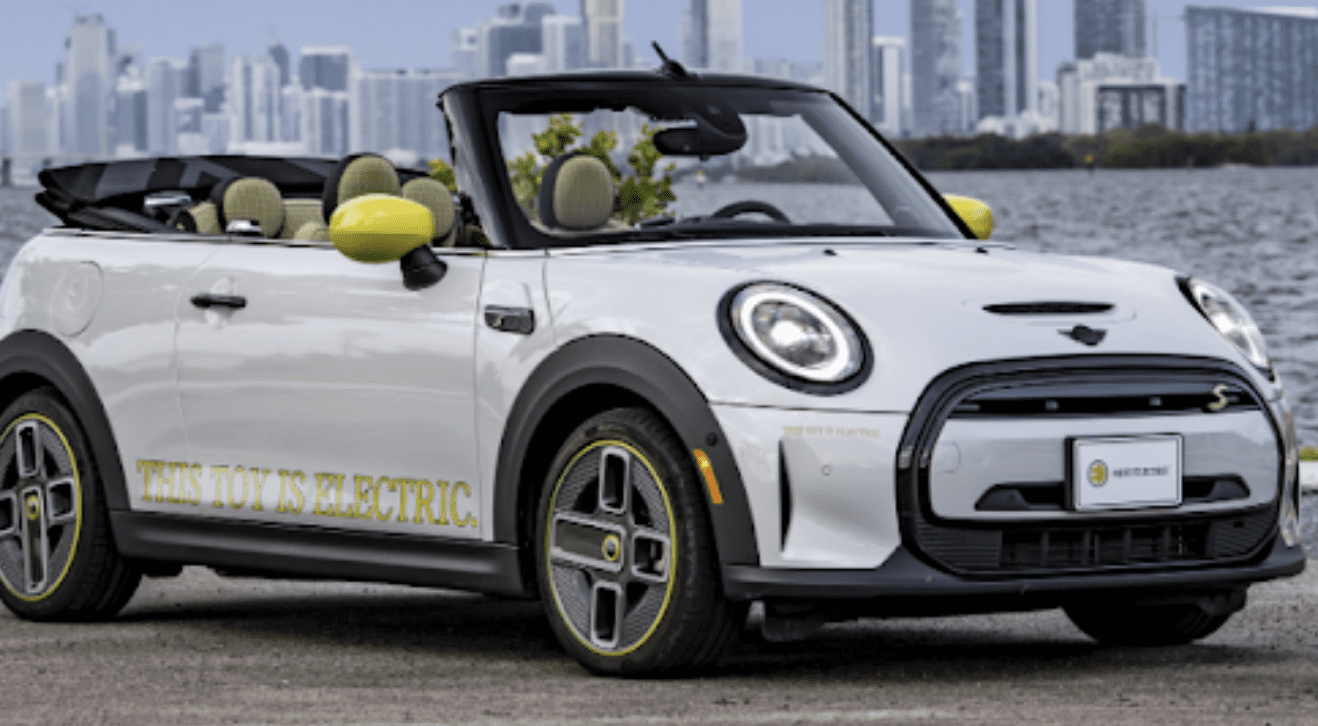
Photo Courtesy BMW Group
Mini Cooper: To combat a lack of affordable electric-powered convertibles, Mini has designed a new EV roadster. The Mini Cooper SE EV is emerging as one of the top cruising and leisure vehicles. The car took a full road trip across the East Coast, from Burlington, VT, to Greenville, SC, as part of its “Mini Takes the States” traveling showcase.
The vehicle body and detachable roof come from the Cooper S model, and the interior is made from sustainable materials. Under the hood is the electric Cooper SE hatchback engine. It can go 0-to-60 in 7.7 seconds, which is pretty slow for a convertible cruiser, but it’s not expected to be a sticking point for customers. The Cooper SE EV has 143 miles of range in the battery.
Compared to competitors with similar EVs, the Mini is lighter and costs a fraction of brands like Porsche or Tesla. The price ranges from $29,000 to $30,000, which is not much different from the hardtop Cooper SE.

Photo Courtesy Nissan
Nissan LEAF: This is the “OG” of EVs. The LEAF was launched in 2009, long before electric cars were even a thought in the minds of car executives. When it went on sale in 2010, it boasted an impressive 125 miles of range, great for the time.
Now, batteries and range limits have improved substantially. That’s thanks to the LEAF. It opened the door for companies like Tesla, makers of a more efficient electric car. It was priced modestly at $32,780, which set a standard for the next generations of EVs.
The LEAF’s biggest contribution to the electric car movement was its charging stations. In Japan, the CHAdeMO network became essential to the LEAF’s long-term future in the country.
As of December 2020, Nissan has expanded the network to 30,000 chargers globally, influencing Tesla and GM heavily.
Despite its small, modest appearance, the LEAF still sold 450,000 units by 2020 before the Tesla Model 3 dethroned it as the number one selling EV. The LEAF’s role in EV history cannot be understated.
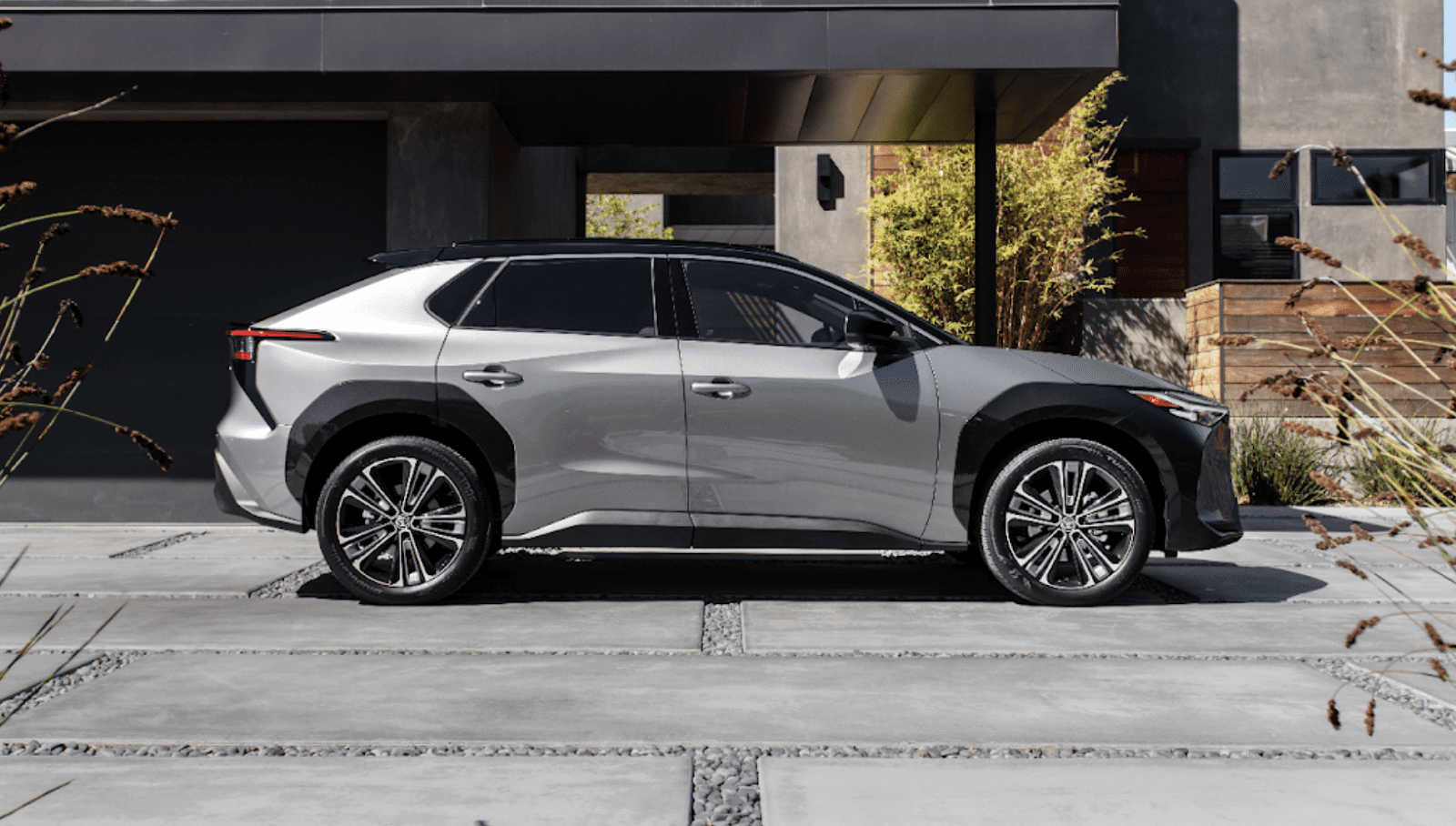
Photo Courtesy Toyota
Toyota bZ4X: The bZ4X is Toyota’s first mass-market EV, outside of the long-standing Prius lineup. It’s much different than its hybrid predecessors. The fully-electric crossover has 215 horsepower in the AWD version. The 0-to-60 time is 7 seconds, slower, but this car isn’t for racing.
Most reviews deem it’s for leisure driving. It gets you to where you need to be, thanks to its 252 miles of range. The bZ4X also has regenerative braking. A fast charger can return 80% of power in less than an hour. Toyota will even give drivers a year of complimentary charging, thanks to its partnership with EVgo.
The interior is modest, with a basic infotainment system and a digital dashboard. There are 28 cubic feet of storage space in the trunk. Safety features include adaptive cruise control, lane-keeping technology, blind-spot monitoring, and safe exit assist. The base bZ4X costs $43,315 but qualifies for the $7,500 clean vehicle tax credit.

Photo Courtesy Vela Bikes
Vela Bikes: Vela creates high-tech e-bikes for bike riders in the city that feature an oversized seat tube that houses a cylindrical battery that can be removed. It makes it easier for bikers because they don’t have to take the whole thing inside their homes to charge.
A 350-watt motor powers the bikes and assists riders up to 20 miles per hour. The technology comes from an app, which includes Bluetooth, GPS, a 4G sim card, and a USB charging port.
The company, which moved its manufacturing from China to Detroit, offers two models. The Low Step is designed for riders 5’1” to 6 feet tall, and the High Step is made for riders 5’7” to 6’5”. The retail price for each bike is around $1,800.





